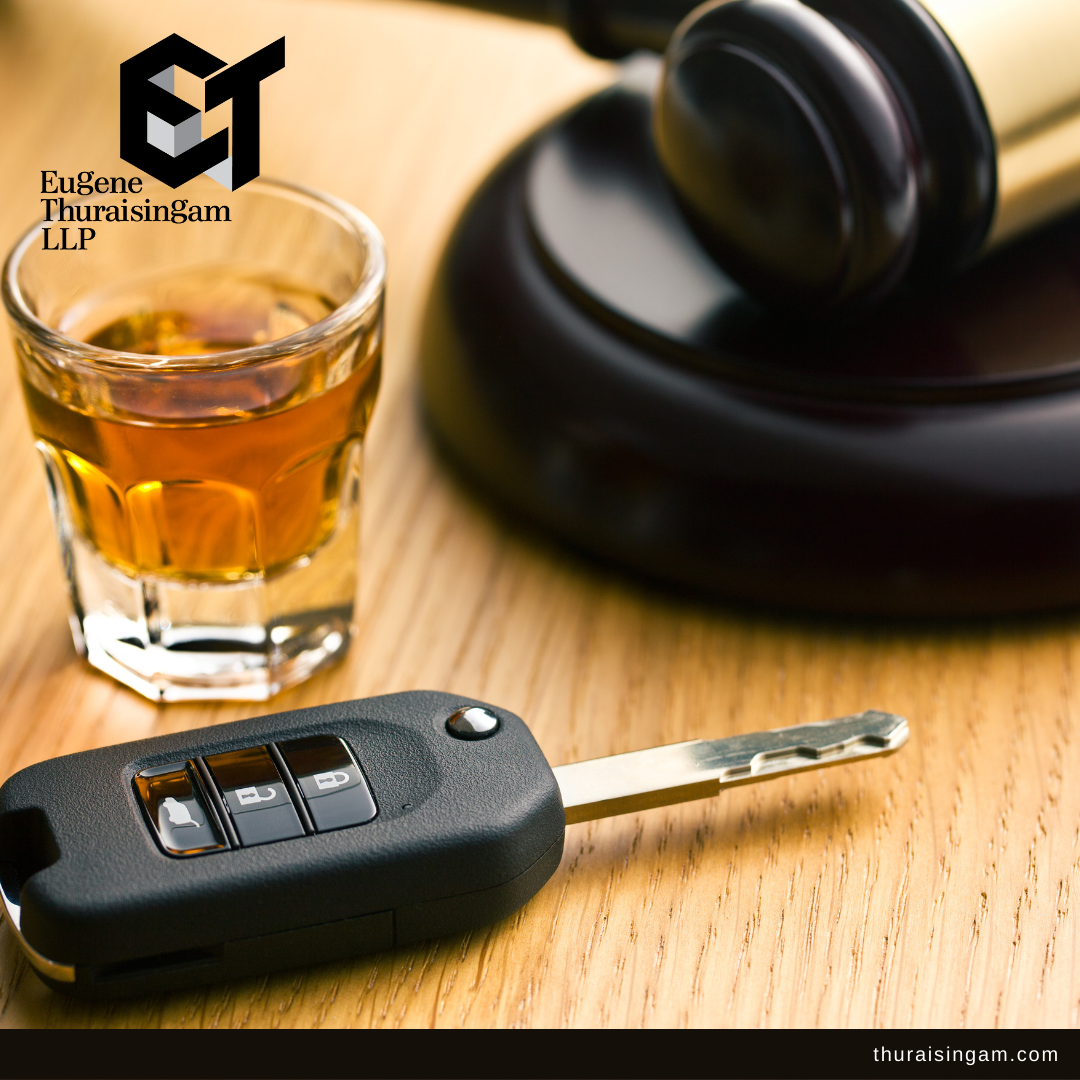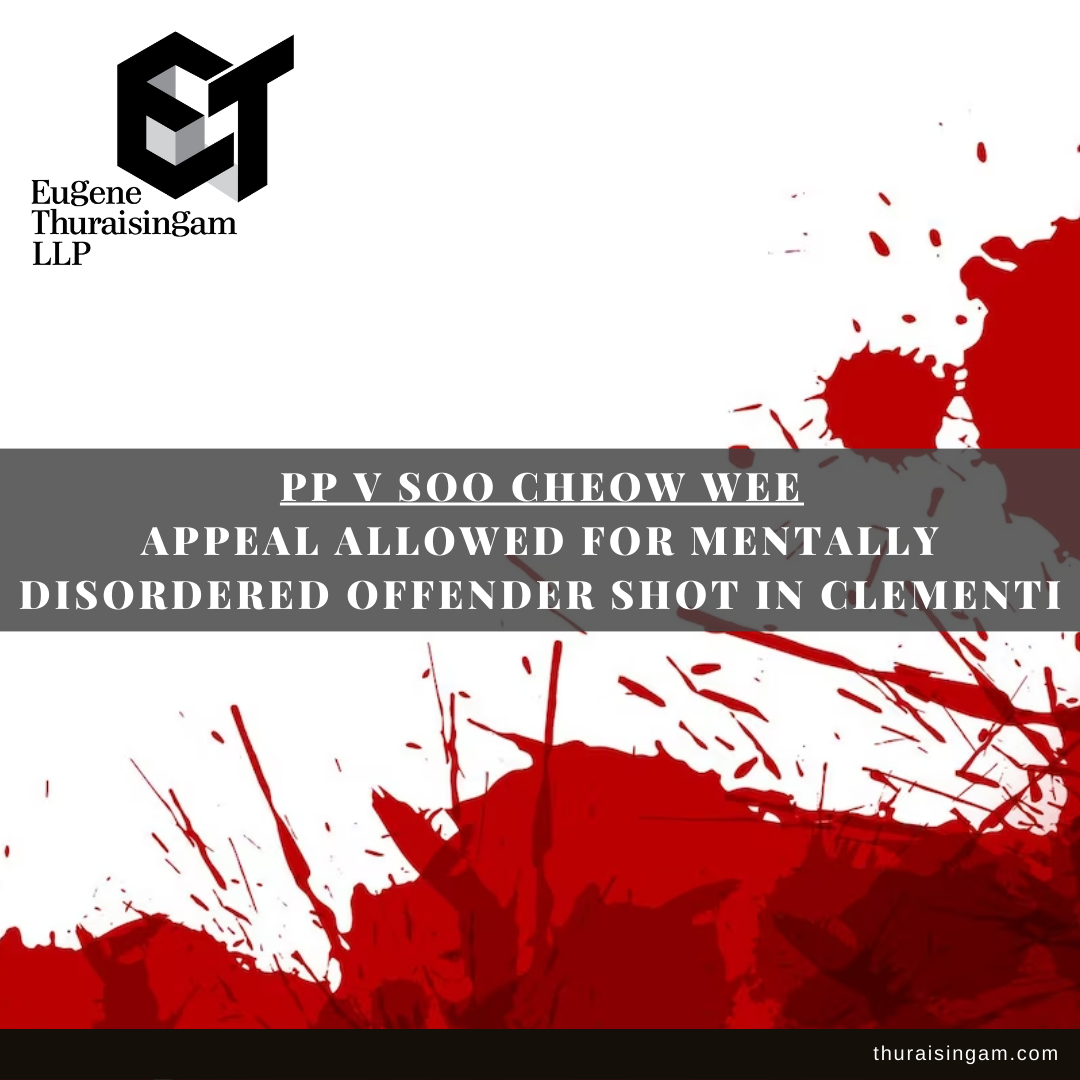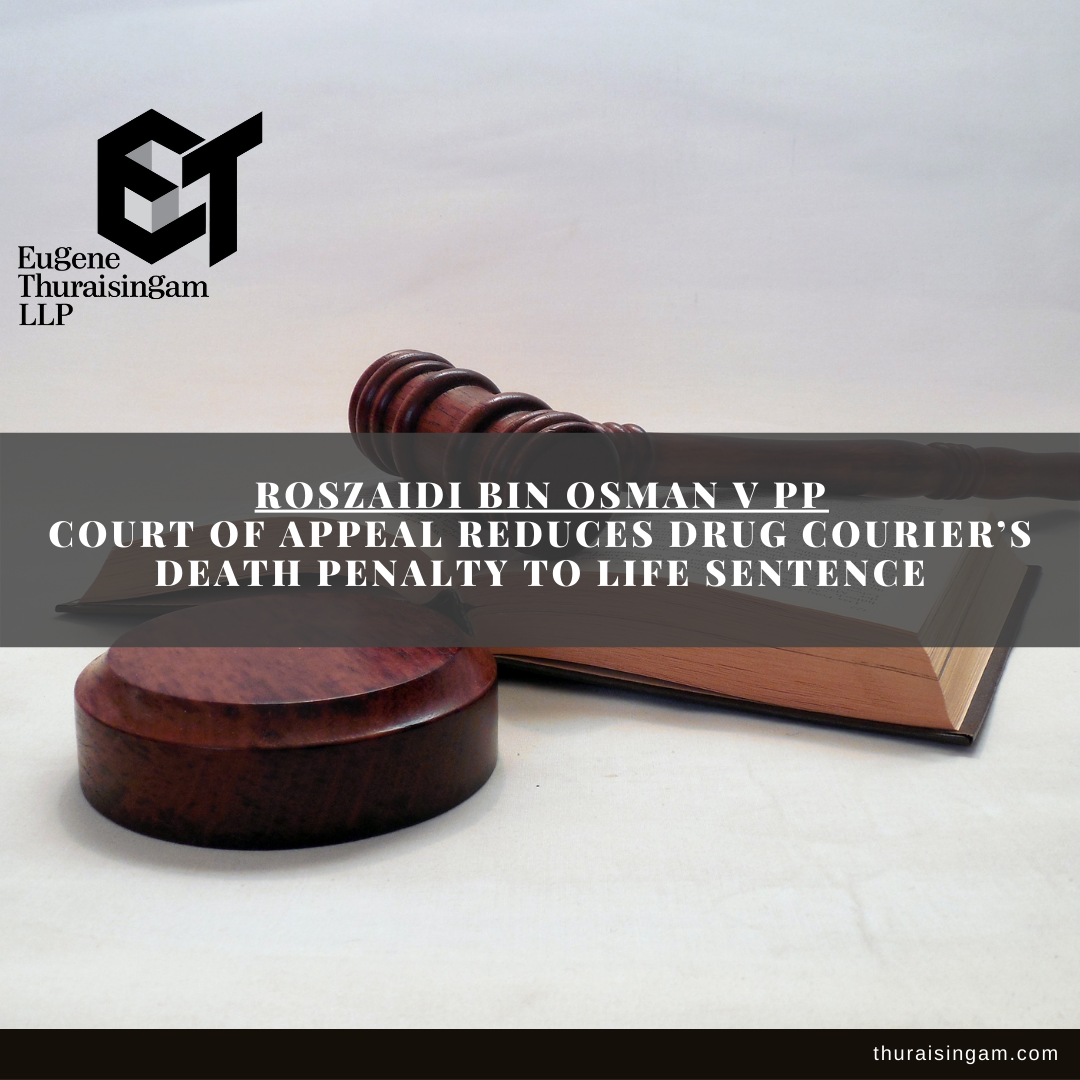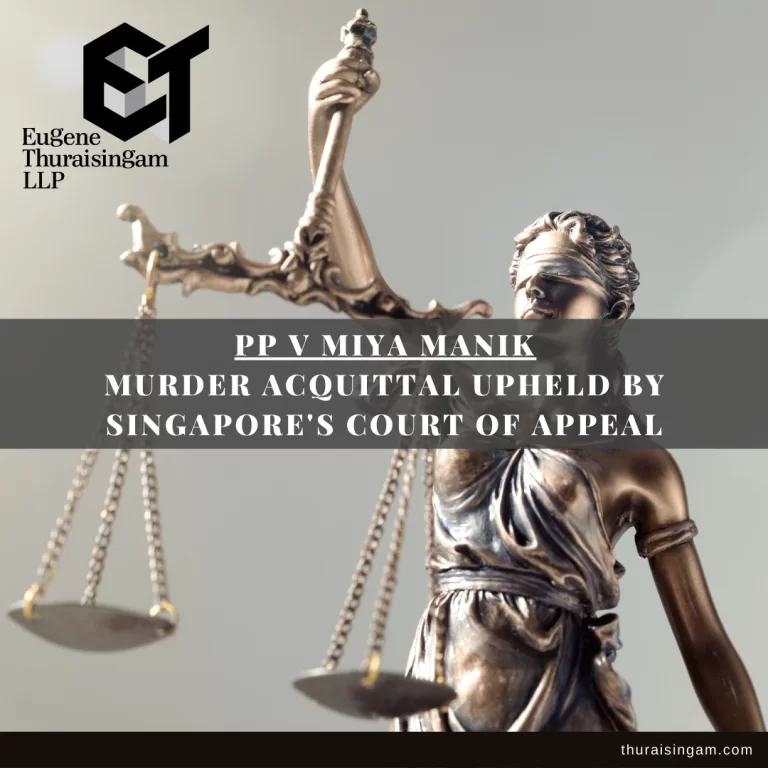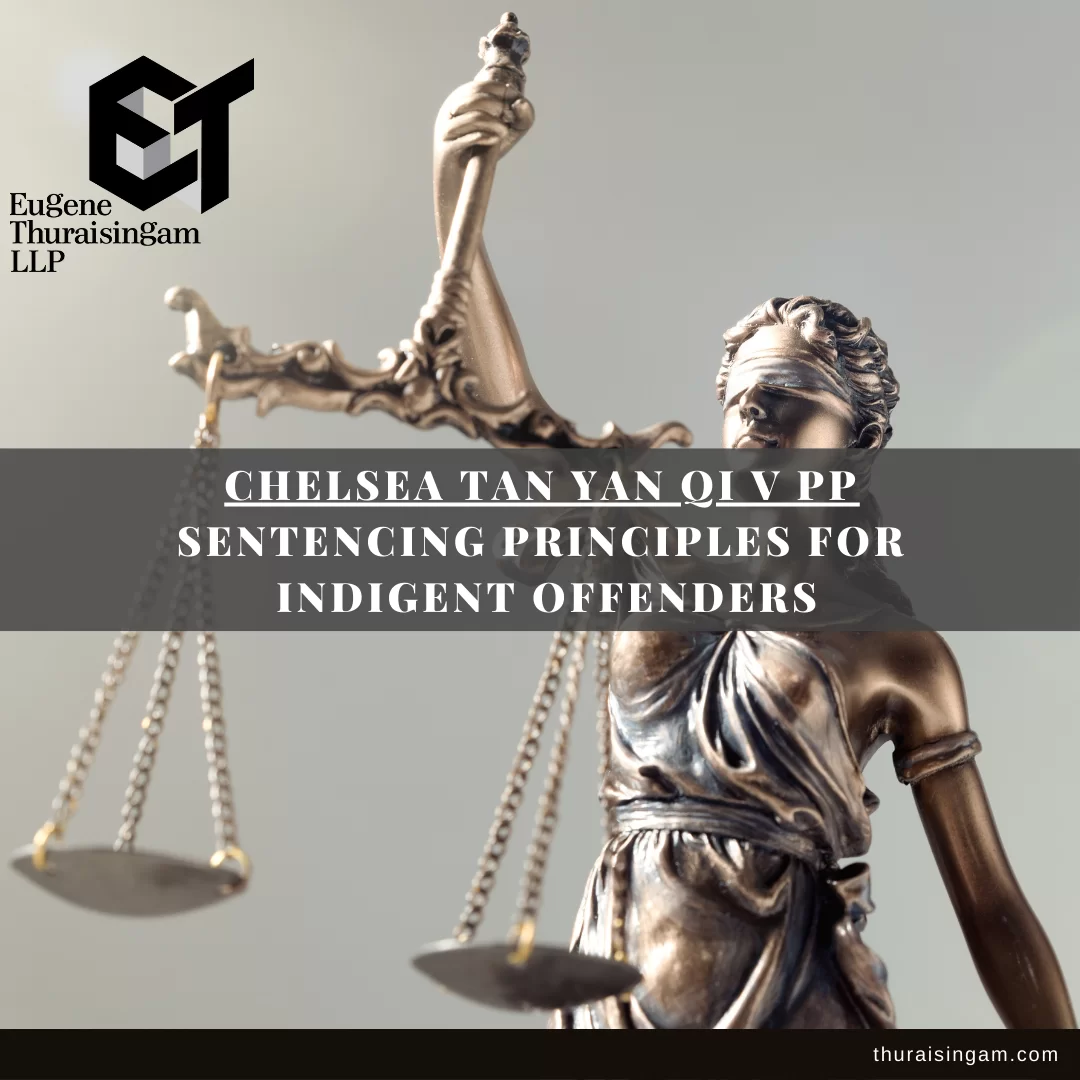Road Traffic Act: Chief Justice’s New Framework for Drink Driving and Reckless Driving Offences
Criminal Procedure and Sentencing: [2021] SGHC 261
1. Introduction
In July 2019, Parliament introduced sweeping amendments to the Road Traffic Act (“RTA”) (by way of the Road Traffic (Amendment) Act 2019) aimed at providing stronger deterrence against irresponsible driving. The reforms enhanced the penalties for irresponsible driving and tightened the regulatory regime against irresponsible driving with the overarching objective of consolidating and streamlining the offences pertaining to irresponsible driving.
Notably, the penalties under the RTA were further enhanced where drink driving occurred in conjunction with reckless or dangerous driving, through the introduction of the “serious offender” provisions. Specifically, this is provided for in subsection (c) of each of ss 64(2), (2A), (2B) and (2C) read with s 64(8), the latter of which defines a serious offender as one who has also been convicted of certain other offences including drink driving under s 67.
This case provided the Chief Justice (sitting in the High Court) with an opportunity to consider the new amendments and develop a framework for the application of the amended provisions under the RTA.
2. Background facts
On 11 February 2020, our client was drinking alone at a club at Orchard Plaza.
At about 3:15am, our client left the club and drove his vehicle out of Orchard Plaza. Whilst driving along Crawford Street towards Lavender Street, our client spotted a police roadblock ahead of his vehicle on Crawford Street. Upon seeing the roadblock, our client made a three-point turn and drove away from the roadblock back along Crawford Street towards Beach Road.
Our client drove against the flow of traffic for an estimated distance of at least 140 metres. The police officers on duty gave chase and eventually caught up with him. He was then administered a breathalyser test revealing that he had 46 micrograms of alcohol per 100ml of breath, which was above the prescribed limited of 35 micrograms of alcohol per 100ml of breath.
Our client was charged with one count of drink driving under s 67(1)(b) read with s 67(2)(a) of the RTA, as well as one count of reckless driving under s 64(1) punishable under s 64(2C)(a) read with ss 64(2C)(c) and 64(2D)(i) of the RTA.
Our client pleaded guilty to both charges on 30 October 2020. In respect of each of the charges, he was sentenced to 17 days’ imprisonment and disqualified from holding or obtaining all classes of driving licences for a period of 42 months.
3. Framework for sentencing driver who drives reckless while under the influence of drink
The key issues for the Court’s determination were as follows (at [18]):-
(a) First, what is the appropriate sentencing framework for offences under s 64 of the RTA having regard, in particular, to the serious offender provisions?
(b) Second, what is the appropriate sentencing framework for offences under s 67 of the RTA?
(c) Finally, where an offender has been charged with separate offences under ss 64 and 67 and where the enhanced penalty for serious offenders is applicable, how should these provisions be applied in tandem?
The Sentencing Framework for s 64 of the RTA
First Step: the court will have regard to the offence-specific factors at the first step to identify the sentencing band within which the offence falls
(a) Regard can be had to the following offence-specific aggravating factors when selecting the appropriate sentencing band.
i. Serious potential harm
ii. Serious property damage
iii. High alcohol level found in the accused person’s blood or breath
iv. An offender’s reason or motivation for driving
v. Increased culpability. Including a particularly dangerous manner of driving
vi. The offender’s conduct following the offence or attempt to evade arrest
Bearing in mind the precedent cases as well as the statutory maximum punishments, the appropriate bands for s 64(2C)(a) of the RTA read with s 64(2C)(c), are as follows:
Band 1: Cases at the lower level of seriousness, with no offence-specific aggravating factors present or where they are present only to a limited extent | A fine of between $2,000 and $15,000 and/or up to one month’s imprisonment and a disqualification period of two to three years. |
| Band 2: Cases reflecting a higher level of seriousness and would usually contain two or more offence-specific aggravating factors. In these cases, the level of culpability and the blood alcohol level will typically both be on the higher side. | Between one month’s and one year’s imprisonment and a disqualification period of three to four years. |
| Band 3: Most serious cases of reckless or dangerous driving whilst under the influence of drink | Between one year’s and two years’ imprisonment and a disqualification period of four to five years. |
| Notes: Custodial threshold: It is likely that the custodial threshold would be crossed in many cases in view of the gravity of the offence reflected in these provisions. The statutory provisions allow for the possibility of a fine to cater to the myriad of factual situations that could arise under this offence. This possibility is accordingly reflected in the framework. A fine, however, would generally be appropriate only where the offence is not aggravated and falls at the lowest end of Band 1. Repeat / serious offenders: Where the offender is a “repeat offender” or “serious repeat offender” as defined in s 64(8) of the RTA, the range of sentences that can be imposed on the offender has been increased accordingly in ss 64(2C)(b) and 64(2C)(d). Where a repeat offender is also a serious offender (s 64(2C)(b) read with s 64(2C)(c)), or where a first or repeat offender is also a serious repeat offender (ss 64(2C)(a) or 64(2C)(b) read with s 64(2C)(d)), the applicable sentencing ranges for each band in the sentencing framework will be correspondingly higher than ranges set out above, bearing in mind the different punishments available. The formulation of these sentencing ranges will need to be done by the court in suitable cases. | |
Second Step: The court would have regard to the offender-specific factors, being the aggravating and mitigating factors that are personal to the offender. Offender-specific aggravating factors include offences taken into consideration for the purposes of sentencing, the presence of relevant antecedents (apart from where the offender’s antecedents have been taken into account under the “repeat offender” or “serious repeat offender” provisions), and evidence showing a lack of remorse. Offender-specific mitigating factors include evidence of genuine remorse and an offender’s youth.
Such an inquiry, however, would necessarily have to encompass the serious offender provision that is contained in s 64(2C)(c) of the RTA.
The Sentencing Framework for s 67 of the RTA
The appropriate framework for sentencing an offence under s 67 RTA is as follows (this was set out in Rafael Voltaire Alzate [2021] SGHC 224):-
| Level of alcohol (μg per 100ml of breath) | Range of fines | Range of disqualification |
| 36–54 | $2,000–$4,000 | 24–30 months |
| 55–69 | $4,000–$6,000 | 30–36 months |
| 70–89 | $6,000–$8,000 | 36–48 months |
| ≥ 90 | $8,000–$10,000 | 48–60 months (or longer) |
The situation that the above framework seeks to deal with is one where no harm to person or property has eventuated. In such instances, it is a matter for the sentencing judge to consider whether the custodial threshold has been crossed. Much will turn on the circumstances. In contrast, a term of imprisonment will generally be an appropriate starting point where an offender has caused personal injury or damage to property as a result of driving whilst under the influence of drink.
Interaction between ss 64 and 67 of the RTA
The operation of the enhanced penalty provision in s 64(2C)(c) is contingent on the offender also being convicted of either an offence under ss 67 or 70(4) of the RTA. For this reason, it necessarily follows that the Prosecution would have to charge an offender for, and proceed on, both offences under ss 64 and 67 in order for the penalty provision to apply. This is so even when both charges relate to the identical act of wrongdoing.
The sentences for both offences should run concurrently because the punishment for the offence of dangerous or reckless driving would already have been enhanced on account of the serious offender provision by a range that is similar to that applicable under s 67, although to a degree that is likely to be greater by reason of treating the two as a compound offence rather than as two separate and unrelated offences.
Furthermore, running such sentences under ss 64 and 67 consecutively where they relate to the same set of facts would also seem to be inconsistent with the rule against double counting factors in sentencing.
Notwithstanding the above, the Chief Justice expressed the provisional view that a court would not be prevented from imposing a custodial sentence for the offence under s 64 and, separately, a fine for the offence under s 67, where that is considered appropriate.
4. Application to facts
On the facts, our client had 46 micrograms of alcohol per 100ml of breath, following the sentencing framework set out in Rafael Voltaire Alzate, he was liable to be sentenced to a fine of between $2,000 to $4,000, and a disqualification term of between 24 to 30 months. There is no indication in the Statement of Facts that our client admitted to that there were any further aggravating factors that pertained specifically to this offence. As such, he would fall in the middle of this range, and a fine of $3,000 and a disqualification order for a period of 27 months would have been appropriate.
In relation to the offence under s 64, there were two aggravating factors: 1. The degree of potential harm that could have been caused by our client’s action was very high and it was fortuitous that no harm or property damage materialised. 2. our client had driven in such a dangerous manner in a deliberate attempt to avoid apprehension and evade arrest. The only mitigating factor was that our client had pleaded guilty to his offences. Thus our client’s case fell within the lower end of Band 2 of the sentencing framework.
In the circumstances, the sentence imposed by the District Judge of 17 days’ imprisonment and a disqualification order for a period of 42 months for each of the offences, both sets of sentences to run concurrently, was not manifestly excessive.
Our client was represented in the State Courts and on appeal by Chooi Jing Yen and Joel Wong.
Disclaimer: This case summary is not to be taken as legal advice. Please contact us for any enquiries.

